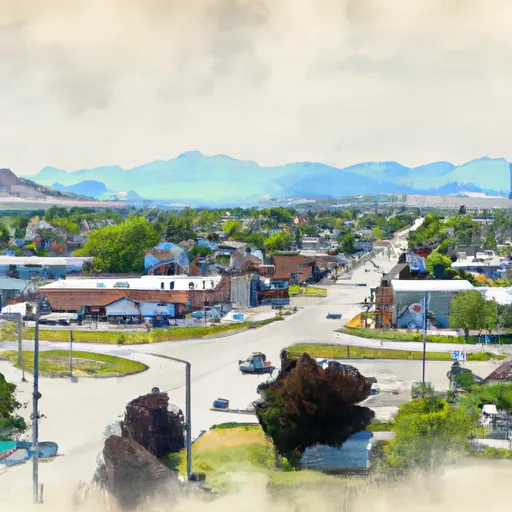-
 Snoflo Premium
Snoflo Premium
Get unlimited access to all our content
With no Ad interruptions! - Start Your Free Trial Login with existing account
Grantsville
Eden Index
Climate
9.0
•
Recreation
1.2
•
Community
•
Safeguard
4.0/10

Grantsville is a city located in Tooele County, Utah. The climate in Grantsville is a semi-arid desert climate, with hot summers and cold winters. The city is situated near the Great Salt Lake and several rivers, making hydrology an important factor in the area. Outdoor recreation opportunities in Grantsville include hiking, fishing, and hunting in the nearby mountains and reservoirs. The city is also home to several parks and trails, including the Grantsville Reservoir Trail and the Deseret Peak Trail. Overall, Grantsville offers a unique blend of outdoor adventures and desert landscapes for visitors and residents alike.
What is the Eden Index?
The Snoflo Eden Index serves as a comprehensive rating system for regions, evaluating their desirability through a holistic assessment of climate health, outdoor recreation opportunities, and natural disaster risk, acknowledging the profound impact of these factors on livability and well-being.
Climate Health Indicator (CHI): 9.0
Grantsville receives approximately
303mm of rain per year,
with humidity levels near 64%
and air temperatures averaging around
11°C.
Grantsville has a plant hardyness factor of
7, meaning
plants and agriculture in this region tend to thrive during the non-winter months.
By considering the ideal temperature range, reliable water supplies, clean air, and stable seasonal rain or snowpacks, the Climate Health Indicator (CHI) underscores the significance of a healthy climate as the foundation for quality living.
A healthy climate is paramount for ensuring a high quality of life and livability in a region, fostering both physical well-being and environmental harmony. This can be characterized by ideal temperatures, reliable access to water supplies, clean air, and consistent seasonal rain or snowpacks.
Weather Forecast
Streamflow Conditions
Great Salt Lake
Area Rivers
Great Salt Lake
Snowpack Depths
Great Salt Lake
Reservoir Storage Capacity
Great Salt Lake
Groundwater Levels
Recreational Opportunity Index (ROI): 1.2
The Recreational Opportunity Index (ROI) recognizes the value of outdoor recreational options, such as parks, hiking trails, camping sites, and fishing spots, while acknowledging that climate plays a pivotal role in ensuring the comfort and consistency of these experiences.
Access to outdoor recreational opportunities, encompassing activities such as parks, hiking, camping, and fishing, is crucial for overall well-being, and the climate plays a pivotal role in enabling and enhancing these experiences, ensuring that individuals can engage in nature-based activities comfortably and consistently.
Camping Areas
| Campground | Campsites | Reservations | Toilets | Showers | Elevation |
|---|---|---|---|---|---|
| Intake | 5 | 6,309 ft | |||
| Grantsville Reservoir | 24 | 5,040 ft | |||
| Upper Narrows | 6 | 6,906 ft | |||
| Boy Scout | 7 | 6,511 ft | |||
| Clover Springs | 11 | 5,962 ft | |||
| Loop | 13 | 7,415 ft |
Nearby Ski Areas
Catastrophe Safeguard Index (CSI):
The Catastrophe Safeguard Index (CSI) recognizes that natural disaster risk, encompassing floods, fires, hurricanes, and tornadoes, can drastically affect safety and the overall appeal of an area.
The level of natural disaster risk in a region significantly affects safety and the overall livability, with climate change amplifying these risks by potentially increasing the frequency and intensity of events like floods, fires, hurricanes, and tornadoes, thereby posing substantial challenges to community resilience and well-being.
Community Resilience Indicator (CRI):
The Community Resilience Indicator (CRI) recognizes that education, healthcare, and socioeconomics are crucial to the well-being of a region. The CRI acknowledges the profound impact of these elements on residents' overall quality of life. By evaluating educational resources, healthcare accessibility, and economic inclusivity, the index captures the essential aspects that contribute to a thriving community, fostering resident satisfaction, equity, and social cohesion.

